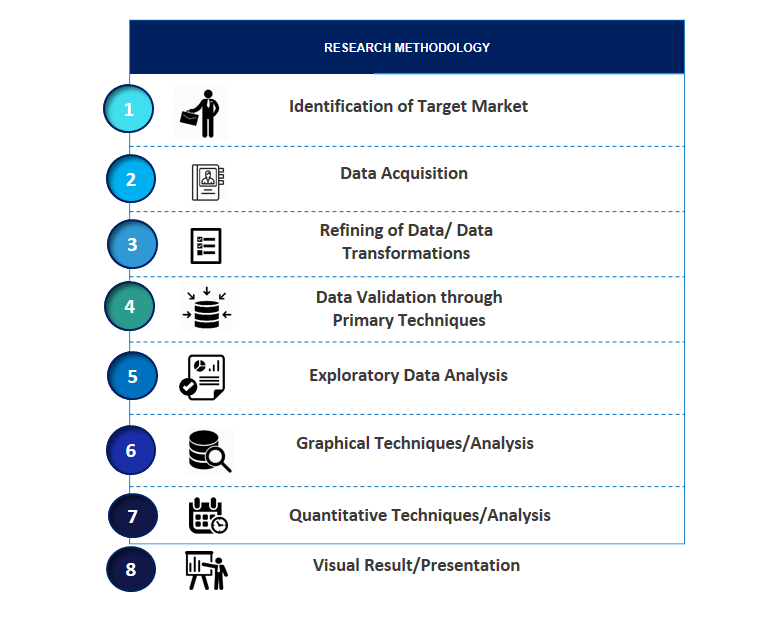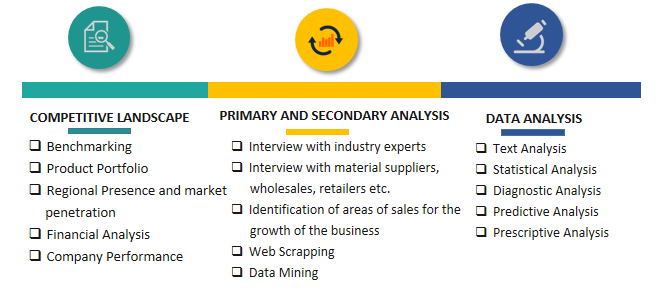Global Banking Hardware Maintenance Market Overview
According to SPER Market Research, the Global Banking Hardware Maintenance Market is estimated to reach USD 25.08 billion by 2032 with a CAGR of 8.33%.
The hardware, software, and helpdesk support services provided by the banking sector can provide a plethora of relevant information to business strategists. It provides an industry overview for software support, banking hardware upkeep, and help desk support services, together with historical and projected cost, income, demand, and supply data. The rapid population growth in emerging countries and the growing emphasis on improving customers' in-branch experiences have considerably raised the demand for banking hardware maintenance, software support, and helpdesk support services. The demand for maintenance and support services is expected to rise as self-service devices like ATMs, cash deposit machines, banking kiosks, and digital signage systems become more common in banks. Additionally, it is projected that these determinants will significantly increase revenue compared to the forecast period.
Impact of COVID-19 on the Global Banking Hardware Maintenance Market
The COVID-19 outbreak had a significant impact on the banking hardware repair, software support, and helpdesk support services markets as several companies were compelled to temporarily halt operations as a result of the lockdown and quarantine measures enforced. Because the banking industry was still functioning, maintenance services at the branches were still required to safeguard the health and safety of employees and prevent viruses from infiltrating the banks. For instance, BS/2, a maintenance service provider, offered full maintenance service for banking equipment even when quarantine laws were put into place.

Scope of the Report:
| Report Metric | Details |
| Market size available for years | 2019-2032 |
| Base year considered | 2021 |
| Forecast period | 2022-2032 |
| Segments covered | By Service Type, By Components.
|
| Regions covered | Asia-Pacific, Europe, Middle East and Africa, North America, Latin America
|
| Companies Covered | Cardtronics, CashLink Global Systems Pvt. Ltd., Diebold Nixdorf Incorporated, Glory Global Solutions Limited, Hitachi Ltd., Loomis AB, NCR Corporation, Oki Electric Industry Co. Ltd.
|
Global Banking Hardware Maintenance Market Segmentation:
1. By Service Type:
- ATM – Maintenance Service Costs
- ATM – Operational Support Service Costs
- Banking Kiosk
- Currency Sorters
- Detectors and Counters
2. By Component:
3. By Region:
- Asia-Pacific
- Europe
- Middle East
- Africa
- North America
- Latin America
Key Topics Covered in the Report:
- Size of Global Banking Hardware Maintenance Market (FY’2019-FY’2032)
- Global Banking Hardware Maintenance Market Overview
- Segmentation of Global Banking Hardware Maintenance By Service Type (ATM – Maintenance Service Costs, ATM – Operational Support Service Costs, Currency Sorters, detectors and Counters, Banking Kiosk, Digital Signage Systems, End User Devices, Peripherals, Queue Management System)
- Segmentation of Global Banking Hardware Maintenance Market By Components (Hardware, Software)
- Growth Analysis of Global Banking Hardware Maintenance Market
- Problems and Challenges in Global Banking Hardware Maintenance Market
- Competitive Landscape in the Global Banking Hardware Maintenance Market
- Impact of COVID-19 and Demonetization on Global Banking Hardware Maintenance Market
- Competitive Analysis of Global Banking Hardware Maintenance Market
- Major Players in the Global Banking Hardware Maintenance Market
- SWOT Analysis of Global Banking Hardware Maintenance Market
- Global Banking Hardware Maintenance Market Future Outlook and Projections (FY’2019-FY’2032)
1. Introduction
1.1. Scope of the report
1.2. Market segment analysis
2. Research Methodology
2.1 Research data source
2.1.1 Secondary data
2.1.2 Primary data
2.1.3 SPER’s internal database
2.1.4 Premium insight from KOL’s
2.2 Market size estimation
2.2.1 Top-down and Bottom-up approach
2.3 Data triangulation
3. Executive Summary
4. Market Dynamics
4.1. Driver, Restraint, Opportunity and Challenges analysis
4.1.1 Drivers
4.1.2 Restraints
4.1.3 Opportunities
4.1.4 Challenges
4.2. COVID-19 Impacts of the Global Banking Hardware Maintenance Market
5. Market variables and outlook
5.1. SWOT analysis
5.1.1 Strengths
5.1.2 Weaknesses
5.1.3 Opportunities
5.1.4 Threats
5.2. PESTEL analysis
5.2.1 Political landscape
5.2.2 Economic landscape
5.2.3 Social landscape
5.2.4 Technological landscape
5.2.5 Environmental landscape
5.2.6 Legal landscape
5.3. PORTER’S five forces analysis
5.3.1 Bargaining power of suppliers
5.3.2 Bargaining power of Buyers
5.3.3 Threat of Substitute
5.3.4 Threat of new entrant
5.3.5 Competitive rivalry
5.4. Heat map analysis
6. Competitive Landscape
6.1 Global Banking Hardware Maintenance Manufacturing Base Distribution, Sales Area, Product Type
6.2 Mergers & Acquisitions, Partnerships, Product Launch, and Collaboration in Global Banking Hardware Maintenance Market
7. Global Banking Hardware Maintenance Market, By Service Type, 2019-2032 (USD Million)
7.1. ATM – Maintenance Service Costs
7.2. ATM – Operational Support Service Costs
7.3. Banking Kiosk
7.4. Currency Sorters
7.5. Detectors and Counters
7.6. Digital Signage Systems
7.7. End User Devices
7.8. Peripherals
7.9. Queue Management System
8. Global Banking Hardware Maintenance Market, By Component, 2019-2032 (USD Million)
8.1. Hardware
8.2. Software
9. Global Banking Hardware Maintenance Market, By Region, 2019-2032 (USD Million)
9.1. Global Banking Hardware Maintenance Market Size and Market Share by Region (2019-2025)
9.2. Global Banking Hardware Maintenance Market Size and Market Share by Region (2026-2032)
9.3. Asia-Pacific
9.3.1. Australia
9.3.2. China
9.3.3. India
9.3.4. Japan
9.3.5. South Korea
9.3.6. Rest of Asia-Pacific
9.4. Europe
9.4.1. France
9.4.2. Germany
9.4.3. Italy
9.4.4. Spain
9.4.5. United Kingdom
9.4.6. Rest of Europe
9.5. Middle East and Africa
9.5.1. Kingdom of Saudi Arabia
9.5.2. United Arab Emirates
9.5.3. Rest of Middle East & Africa
9.6. North America
9.6.1. Canada
9.6.2. Mexico
9.6.3. United States
9.7. Latin America
9.7.1. Argentina
9.7.2. Brazil
9.7.3. Rest of Latin America
10. Company Profiles
10.1. Cardtronics
10.1.1. Company details
10.1.2. Financial outlook
10.1.3. Product summary
10.1.4. Recent developments
10.2. CashLink Global Systems Pvt. Ltd.
10.2.1. Company details
10.2.2. Financial outlook
10.2.3. Product summary
10.2.4. Recent developments
10.3. Diebold Nixdorf Incorporated
10.3.1. Company details
10.3.2. Financial outlook
10.3.3. Product summary
10.3.4. Recent developments
10.4. Glory Global Solutions Limited
10.4.1. Company details
10.4.2. Financial outlook
10.4.3. Product summary
10.4.4. Recent developments
10.5. Hitachi Ltd.
10.5.1. Company details
10.5.2. Financial outlook
10.5.3. Product summary
10.5.4. Recent developments
10.6. Loomis AB
10.6.1. Company details
10.6.2. Financial outlook
10.6.3. Product summary
10.6.4. Recent developments
10.7. NCR Corporation
10.7.1. Company details
10.7.2. Financial outlook
10.7.3. Product summary
10.7.4. Recent developments
10.8. Oki Electric Industry Co. Ltd.
10.8.1. Company details
10.8.2. Financial outlook
10.8.3. Product summary
10.8.4. Recent developments
11. List of Abbreviations
12. Reference Links
13. Conclusion
14. Research Scope
SPER Market Research’s methodology uses great emphasis on primary research to ensure that the market intelligence insights are up to date, reliable and accurate. Primary interviews are done with players involved in each phase of a supply chain to analyze the market forecasting. The secondary research method is used to help you fully understand how the future markets and the spending patterns look likes.
The report is based on in-depth qualitative and quantitative analysis of the Product Market. The quantitative analysis involves the application of various projection and sampling techniques. The qualitative analysis involves primary interviews, surveys, and vendor briefings. The data gathered as a result of these processes are validated through experts opinion. Our research methodology entails an ideal mixture of primary and secondary initiatives.


